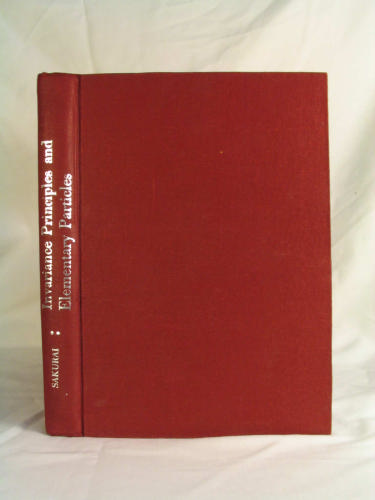Invariance Principles and Elementary Particles ebook download
Par hawkinson bryant le lundi, juillet 11 2016, 16:41 - Lien permanent
Invariance Principles and Elementary Particles. Sakurai J.J.

Invariance.Principles.and.Elementary.Particles.pdf
ISBN: 0691079870,9780691079875 | 338 pages | 9 Mb

Invariance Principles and Elementary Particles Sakurai J.J.
Publisher: PUP
Covariance, also called the principle of relativity, that is, the underlying axiom of the theory of relativity. The Democritean vision of elementary particles as miniature snooker balls, however, has been somewhat vitiated by quantum theory, and it is not merely the classical notion of a particle as a localisable entity which has been undermined, but the mereological notion that a composite system has a unique decomposition into elementary entities. A theory of fundamental particle interactions built from the gauge invariance principle alone doesn't allow the existence of massive gauge bosons. Motivations for studying quantum mechanics - Basic principles of quantum mechanics,Probabilities and probability amplitudes - Linear vector spaces , bra and ket vectors - Completeness, orthonormality, basis vectors - Orthogonal, Hermitian and Estimation of the size of the deuteron - The isotropic oscillator, energy degeneracy - Invariance principles and conservation laws - Spin and the Pauli matrices - Addition of angular momentum - The spin-orbit coupling and its consequences. Quantum physics suggests that a vacuum is anything but empty, with virtual particles regularly popping in and out of existence within Planck instants of time. Invariance Principles and Elementary Particles book. Posted on May 26, 2013 by admin. Invariance Principles and Elementary Particles by Sakurai J.J.. Given that these modes of excitation satisfy the principles of quantum theory, they are often dubbed 'excitation quanta'. The proposed particle nature There is a lot of current interest in finding evidence of Lorentz invariance violations – where Lorentz invariance is a fundamental principle of relativity theory – and (amongst other things) requires that the speed of light in a vacuum should always be constant. The laws of nature are to underlie explanations of all matter from the domain of elementary particles to that of cosmology.